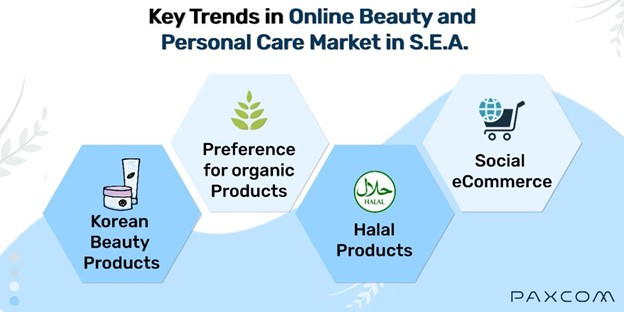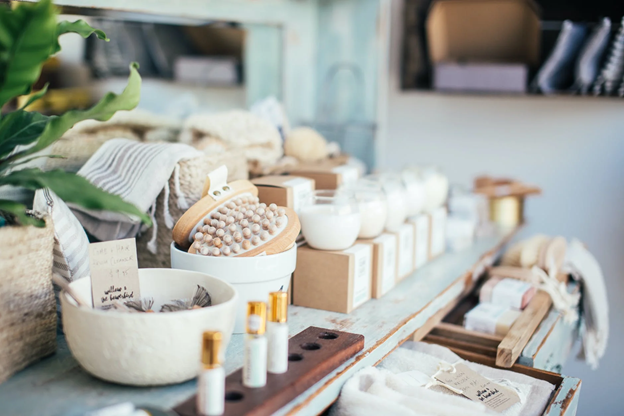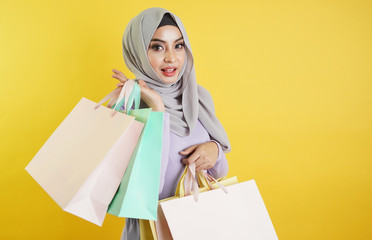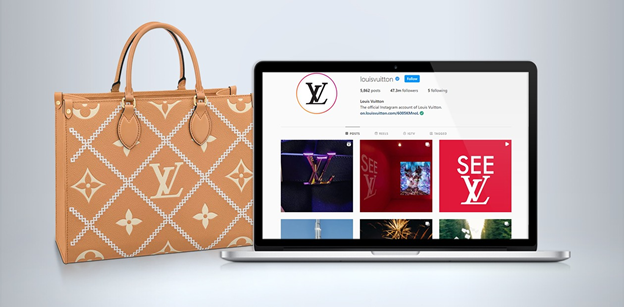Fashion and beauty products have always been about look and feel. Wandering through markets, hopping between shops, and trying on outfits and beauty products at multiple outlets before making the final decision, we all grew up with this experience. Now, questions like “Does the dress fit well?” and “Does the highlighter blend well with the skin tone?” have diminished. Thanks to the onset of beauty and fashion eCommerce, the notion of online shopping has transformed across the globe, and Southeast Asia is no exception.
Walk with us on a journey of facts and data about the world’s three biggest fastest-growing industries: fashion, beauty, and personal care, and how they have been capturing the Southeast Asian eCommerce scene.
Table of Contents
Key insights of the beauty and fashion industry in southeast Asia (stats)
Let’s take a look at some intriguing information regarding the fashion and beauty industries to see if selling on these platforms is profitable and how to continue.
-
- The Southeast Asian apparel market is projected to generate a revenue of US$49.26 billion in 2023.
- The apparel market is expected to record an annual growth rate of 3.94% (CAGR 2023–2027).
- Statista reveals that the Southeast Asian market is expected to exceed $34.56 Billion by 2027, with an estimated annual growth of 3.57%.
- The Beauty and Personal Care industry is predicted to increase at a rate of 5.77 percent each year (CAGR 2022–2026).
(source: Statista)
Key Trends in the Beauty and Personal Care Market in Southeast Asia

1. It’s all about Korean beauty

The popularity of Korean beauty products in Indonesia has risen sharply in recent years, thanks to the large influx of Indonesians drawn to the trend. Using moisturisers and serums, for example, is a common part of the Korean beauty regimen.
To illustrate, on the Indonesian market, imports of Korean cosmetics have multiplied by twelve over the past five years. They have seen greater demand on popular eCommerce platforms such as Althea, a Korean eCommerce channel that distributes and sells cosmetics and beauty items to Southeast Asia, which has also gained $3.5 million in just 12 months after its launch in SEA.
Korean cosmetics brands account for 12% of Southeast Asia’s beauty market, with Indonesia and Vietnam being important export destinations. Recently, an Indonesian beauty and personal care brand, Scarlett Whitening, has appointed renowned K-pop groups as their brand ambassadors. The move resulted in expanding their reach worldwide and increasing sales across platforms such as Shopee and Lazada.
2. Preference for organic products

Following skincare and makeup products, haircare makes up the majority of the ASEAN organic market. Thailand was predicted to dominate the ASEAN organic cosmetics market by 2020, with a market share of 29.3 percent. By 2027, the ASEAN organic cosmetics industry is expected to grow to US$7,297.6 million.
Estée Lauder Inc., L’Oréal Group, WELEDA Inc., Groupe L’OCCITANE, and KORRES Group 2014 are major players in the ASEAN organic cosmetics market.
To win over customers, products don’t need to claim to be “more beneficial.” Natural serves! Even if they don’t consider products to be more effective, consumers who are interested in natural ingredients will choose to use them.
3. Halal products

Southeast Asia is home to over 240 million Muslim consumers, accounting for 40% of the total halal cosmetics production. Halal beauty and personal care products are in high demand because of the rising number of Muslims who would like to blend religious rituals and beauty regimes.
MarkNtel Advisors, in their analysis, predicts a 10% CAGR between 2021 and 2026 for the Southeast Asia Halal Cosmetics Market. Indonesia aims to mandate Halal certification by October 2026. Renowned brands like Shiseido and Estee Lauder have joined hands in the initiative, resulting in extensive market growth.
According to a Nielsen survey, 61% of Muslim consumers in Southeast Asia actively seek out Halal-certified beauty and personal care products. With the rise of e-commerce in the region, Halal beauty products are increasingly accessible. Data from Statista reveals a 40% year-on-year growth in online beauty and personal care sales in Southeast Asia.
4. Through social media, there is a surge of interest in beauty products.
Southeast Asia has a burgeoning social commerce industry. With 150 million digital users, the region is ripe for e-commerce. Businesses seeking a portion of the SEA e-commerce sector must use social media to reach potential customers. From asking questions to giving comments, customers increasingly use social media to communicate with brands.
The following are Southeast Asia’s most popular social media platforms for eCommerce:
- Instagram: The most popular avenue for “talent-led partnerships” between companies and bloggers and influencers is Instagram, a photo and video-sharing networking site owned by Facebook.
- Facebook: It supports several media types, including short to medium videos, which are popular in Southeast Asia. For 62% of Southeast Asians, network sites, short video clips, and texting are the main methods of product discovery.
- WhatsApp is one of the most popular platforms in Southeast Asia to sell and provide assistance for everything under one cover, thanks to its user-friendly design and chatting feature.
There are some apps from which you can send text messages, photographs, videos, voice memos, and even money in real-time.
In Singapore, 94.6% of influencers use Instagram, 4.7% use Twitter, and 0.7% use YouTube. While influencers in the Philippines use Instagram at 78.7%, Twitter at 19.7%, and YouTube at 1.6%,.
Key trends in the fashion market in southeast Asia

Trends in fashion are always moving. The new season comes, new technology develops, and preferences change! This cycle constantly repeats itself in this industry, where risk is woven into the fabric. This is what you need to know about 2023’s popular trends:
- From streetwear casual to ethnic modern silhouettes, embracing diversity has garnered prominent attention in the region.
- Consumers are increasingly inclined towards Fashion: Making eco-friendly choices is becoming the norm.
- Global Fashion Trends Influence: Countries are heavily influenced by global fashion trends such as K-Fashion, C-Fashion, and J-Fashion-inspired styles and aesthetics.
- Customization and DIY Fashion at Peak: Allowing individuals to express themselves freely through unique styles.
While we discuss the ongoing fashion trends, it is important to lay down the key indicators that help these trends flourish and become adaptable among consumers.
1. Email marketing is not going away anytime soon.
By merging fashion marketing and email marketing, you will establish a direct communication channel with your target. Additionally, by utilizing an all-in-one marketing platform, you will be able to acquire, nurture, and convert them into regular customers for your fashion brand!
The average return on investment (ROI) for email marketing is $42 for every dollar invested. It’s not difficult to get started with an email. All you need is an intuitive tool and a little imagination.
The following will help you engage more customers in the fashion eCommerce industry: personalise your emails, welcome emails, new collection launches, sales promotion emails, abandoned cart emails, and post-purchase emails.
2. Personalized Shopping- It’s a Life changer, Right?
Southeast Asia is on its way to becoming a key region for emerging eCommerce firms eager to tap into new markets, according to PayU’s most recent research on consumer spending throughout the world. Indeed, for merchants who can provide a seamless, personalized shopping experience, success in the region will be theirs for the taking.
Personalized products will continue to evolve in lockstep with the evolution of the consumer experience. With a vast product catalogue, you’re likely to have experienced the pain of having to scroll through each item one by one. That’s when a little bit of customization comes in handy.
Sellers must categorize customers according to their location, language choice, or affiliation (say, most reviewed products or best sellers).
Customers are more likely to buy a product or service if it is tailored to their specific needs. A much more exciting and personalized purchasing experience is what everyone wants.
3. Live streaming and virtual events
Two primary areas where live streaming may aid brands, sellers, and platforms are acceleration of conversion and differentiation of brand appeal. This is because AI technology helps retailers calculate performance indicators like audience views, product add-to-cart activities, and live sales.
Shopline Singapore witnessed transaction volume double in the first five months of 2021 as brands and sellers sought to connect virtually and enhance customer engagement. Between February and June 2020, online marketplaces like ShopeeLive saw a nearly 200 percent rise in total streaming hours.
Alibaba’s Taobao Live, which launched in May 2016, ushered in a new era of online shopping—incorporating an internet live stream broadcast with an e-commerce site so that viewers can simultaneously watch and shop.
During the 8.8 fashion and beauty markdown madness campaign, Shopee Live recorded a 12x uplift in buyers. Prominent brands and vendors, including Phinix Store, Lovato, Khairul Aming, and Nivea, increased the popularity of Shopee Live, the live-streaming platform developed by Shopee. During the campaign’s peak, these sellers used Shopee Live’s interactive power to appeal to users more authentically and on a more personal level, adding a personal touch for the buyers.
4. Augmented Reality in eCommerce
Some fashion categories can be challenging to sell online, but with the advent of augmented reality, most of these have already started to empower. It is projected that the fashion sector will increasingly use augmented reality. Smart mirrors are increasingly used for virtual apparel fittings. Customers can virtually try on the jewellery before purchasing it online using these try-on technologies.
Lazada’s “virtual try-on” feature allows users to try beauty products through pictures or videos before making a purchase. By utilizing the try-on platform developed by Perfect Corp., this feature enables consumers to virtually examine their desired looks in the comfort of their own homes through the LazMall flagship locations of Estée Lauder, Bobbi Brown, and M.A.C.
Fashion item returns are quite high, around 60-75%. This situation is frequent during festive sales like 12.12, singles day, Chinese New Year, Valentine’s Day, etc. This is a major issue for sellers and logistical operators since it incurs enormous expenditures. When you buy something online, you don’t always know if it will fit your physique or be to your satisfaction.
AR will be utilized to improve understanding of this data by utilizing advanced visualization and simulation technology. Customers are interested in seeing how clothes appear and fit according to their body shapes. As a result, by combining these technologies, you’ll be able to capture a significant portion of the market.
5. Luxury Brands eCommerce in Southeast Asia

Southeast Asians are increasingly searching for high-end goods online following the pandemic outbreak. Google impressions for major luxury brands have increased because consumers are constrained to visiting retail stores.
Since its introduction in 2020, luxury has been the fastest-growing category among one of SEA’s eCommerce platforms, Zalora’s offerings. At the end of 2020, around its 10.10 and 11.11 sales, the platform reported substantial numbers of luxury and premium purchases. Since then, the category has been one of the fastest-growing segments, with unique customers outperforming others by ten times, Zalora said in a press release.
It’s no secret that luxury brands are associated with the well-off and well-known. It’s seen as a sign of affluence. There are only a few people who can afford to wear high-end clothing! As a result, they’re only made in small quantities, but now luxurious clothing is becoming more popular as the living standard rises worldwide.
Louis Vuitton’s searches jumped 555%, with their fashion and bags leading the surge in search interest by 1,395% and 146%, respectively.
Future of Fashion, Beauty & Personal Care products in SEA eCommerce Market
The future of these two dynamic markets piques the curiosity of a huge number of customers. As more people begin using beauty products, their demands alter by their skin type preferences; consequently, to reach this large audience, you must consider the following things:
- Investigate the shifting dynamics of men’s grooming.
- Recognize prospects in derma-skincare.
- Water-conscious cosmetic products.
- Organic beauty products.
Whereas, with the development of AI and AR, the future of fashion has taken on new significance. Live streams, influencer marketing, and discounts are becoming standard e-commerce sales tactics, so firms must innovate and offer new and exciting ways to stay relevant in a continuously changing sector.
Final Thoughts
Fashion and beauty eCommerce will flourish where technology meets design. Your customers will always be by your side if you keep yourself updated with the latest trends..
We also all know that eCommerce is highly reliant on technology and the latest trends. So, the combination of fashion and eCommerce hits just right! If you are looking for someone to streamline and automate your eCommerce process, then connect with us for more detailed insights at info@paxcom.net














